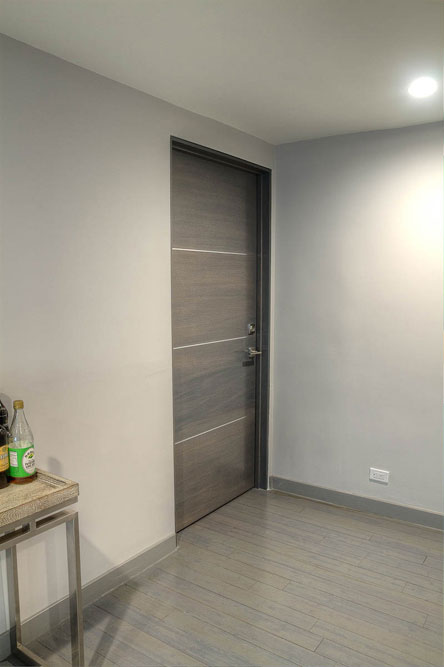
For most consumers, measuring a door for a replacement seems like a relatively simple thing to do—grab a tape measure and… measure the height and width—oula! Unfortunately, it just isn’t quite this simple, though it doesn’t have to be made into an ordeal, either. When you’re measuring an interior or exterior door for replacement, these are the measurements you’ll be handing off to a construction company, handyman, or door wholesaler; this means all the details have to be there, and they must be correct to ensure when your new door arrives, it fits in every sense of the word.
Getting the Basics Down on Paper
The easiest way to keep this process simple is to start by drawing your door on a blank, white piece of paper. Make a note on the page that tells the reader which side of the door you’re on, for example, “interior foyer.” Before getting into anything else complex, use the basic drawing of the door to jot down the measurements you take of the door’s height, its width, and also, the width of the door’s edge (a commonly forgotten measurement that’s very important!)
Door Swing and Door Handle: Critical Door Measurement Details
With the three most basic and important measurements now noted on your door drawing, it’s time to get into some more detailed information to help you find a replacement door that will fit just as it should.
Staying on the same side of the door you’ve noted on your drawing, open the door. Does the door swing inward, or does it swing outward? Whichever is the case, make a note. The correct language choices are in-swing and out-swing, respectively.
Next, take a look at the door from the same side once again—is the doorknob or handle on the left-hand side of the door or the right? Jot this information down as “door swing direction: left,” or “door swing direction: right,” as this will tell your contractor or retailer which side the knob is on, and which side the hinges will be on.
Measuring the Extra Mile Makes the Difference
In many cases, when you are replacing a door, you will also be replacing the doorframe in its entirety. While this may or may not be the case for you, having more information to share with those selling or installing your door never hurts. To be thorough, measure the width and the height of the frame of the door you plan on replacing. If you’d like to be even more thorough, another helpful measurement can be the doorjamb. To accurately measure this portion of your door’s opening, exclude any trim or other detailed embellishments—simply measure from the exterior trim‘s back to the interior trim’s back for the most accurate data.
With all these details on one tiny piece of paper, you’ll be prepared to discuss your door replacement project with any door retailer, contractor, or handyman with ease and accuracy. What’s more, if your project takes a turn for something more complex like a doorframe replacement, you’ll already have all the information you need in one place!


